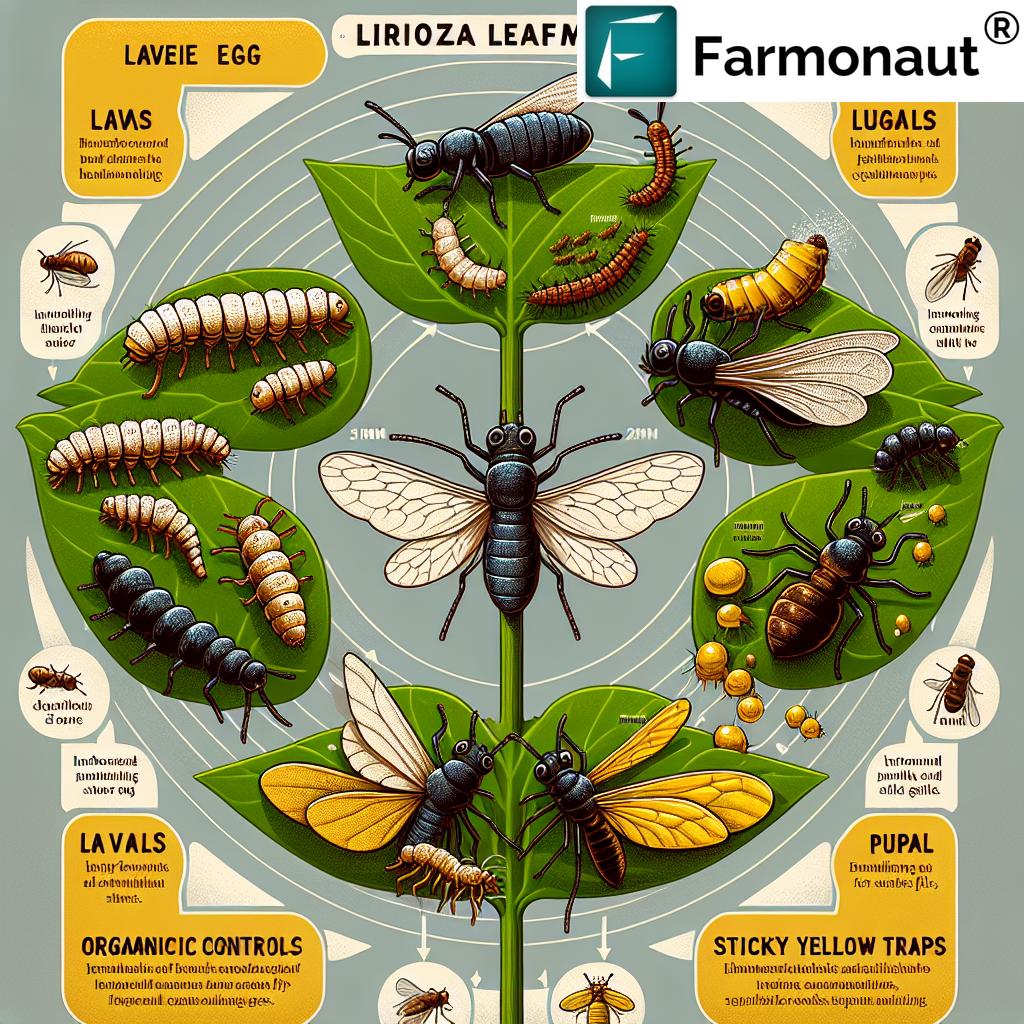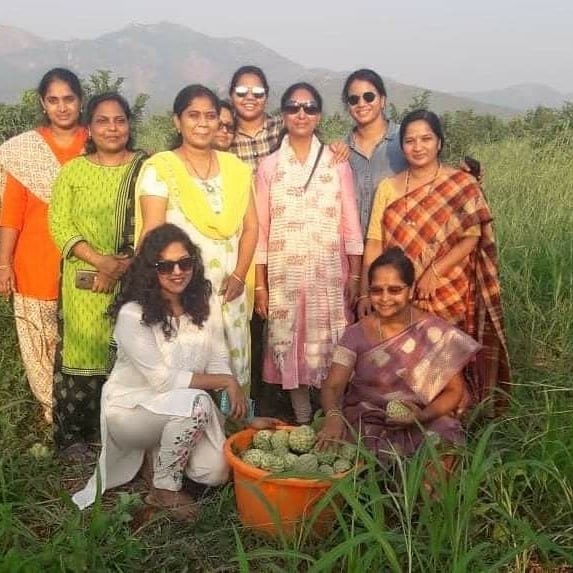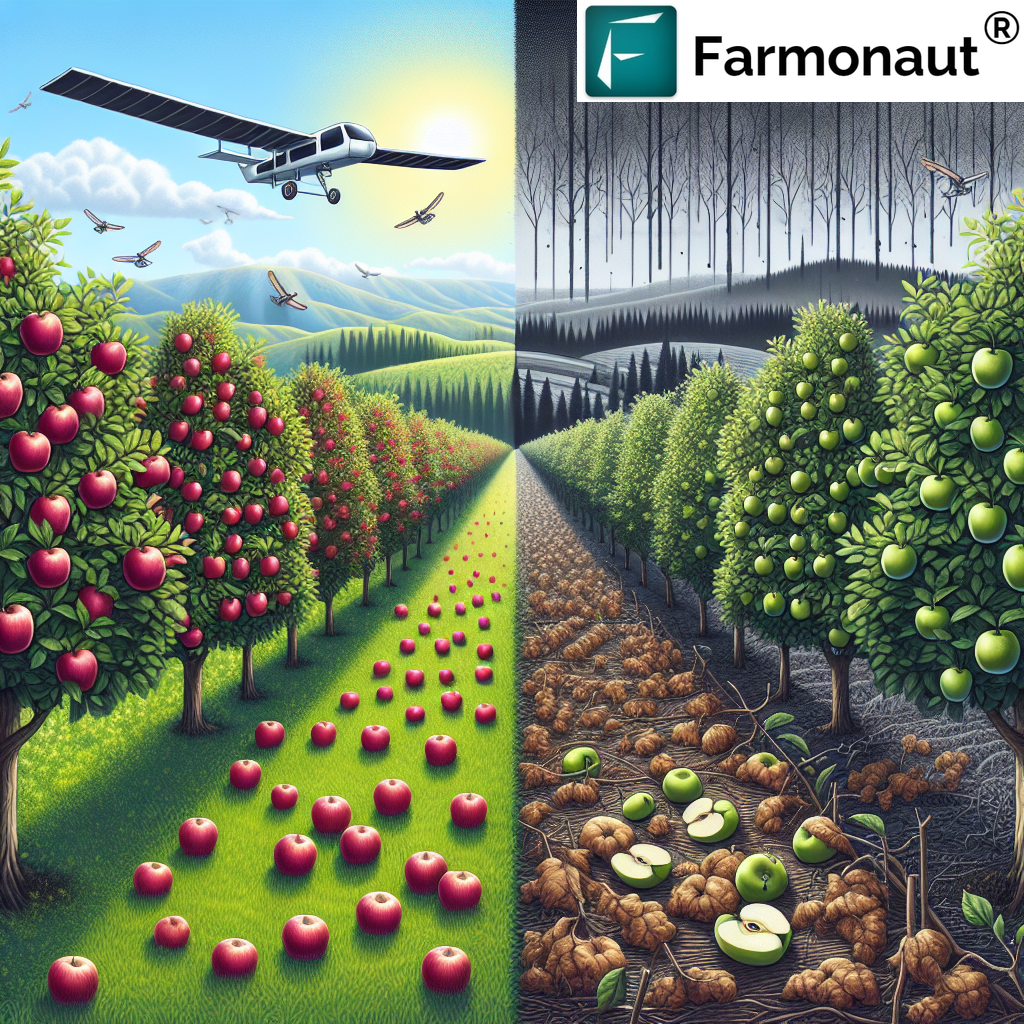Organic Control of Liriomyza Leafminers: Protecting Herbs, Citrus, and Ornamental Crops from Pest Damage

In the world of agriculture and horticulture, pest management is a constant challenge. Among the many pests that threaten our crops, Liriomyza leafminers stand out as particularly troublesome insects. These tiny flies can cause significant damage to a wide range of crops, including valuable herbs, citrus fruits, and ornamental plants. In this comprehensive guide, we’ll explore the nature of these pests, the damage they cause, and most importantly, how to control them using both organic and conventional methods.
Understanding Liriomyza Leafminers
Liriomyza is a genus of small flies belonging to the family Agromyzidae. These insects are commonly known as leafminers due to the characteristic feeding behavior of their larvae. There are several species within this genus that are considered significant agricultural pests, including:
- Liriomyza trifolii (American serpentine leafminer)
- Liriomyza huidobrensis (Pea leafminer)
- Liriomyza sativae (Vegetable leafminer)
- Liriomyza bryoniae (Tomato leafminer)
These leafminers are notorious for attacking a wide range of host plants, including economically important crops and ornamental species.
Life Cycle of Liriomyza Leafminers
Understanding the life cycle of Liriomyza leafminers is crucial for effective pest management. The life cycle typically consists of four stages:
- Egg: Adult female flies lay their eggs inside the leaf tissue.
- Larva: Upon hatching, the larvae (also known as maggots) begin feeding on the leaf tissue, creating characteristic tunnels or mines.
- Pupa: After completing their larval stage, the maggots exit the leaf and pupate in the soil or on the leaf surface.
- Adult: The adult flies emerge from the pupae and begin the cycle anew.
The entire life cycle can be completed in as little as 15-25 days, depending on environmental conditions. This rapid reproduction rate is one of the reasons why Liriomyza leafminers can quickly become a severe problem if left unchecked.
Recognizing Liriomyza Damage
The damage caused by Liriomyza leafminers is quite distinctive and can be recognized by the following signs:
- Serpentine tunnels or mines within leaves
- Stippling on leaf surfaces caused by adult feeding and egg-laying
- Yellowing and premature dropping of heavily infested leaves
- Reduced photosynthetic capacity of affected plants
- Stunted growth and reduced yield in severe infestations
This damage not only affects the aesthetic value of ornamental plants but can also significantly impact the yield and quality of agricultural crops.
Crops Commonly Affected by Liriomyza Leafminers
Liriomyza leafminers are known to attack a wide variety of plants. Some of the most commonly affected crops include:
- Herbs: Basil, cilantro, parsley, mint
- Vegetables: Tomatoes, peppers, cucumbers, melons, squash, beans, peas
- Ornamental plants: Chrysanthemums, gerberas, gypsophila, marigolds
- Fruit trees: Citrus species (lemons, oranges, grapefruits)
- Field crops: Potatoes, onions, celery
The wide host range of these pests makes them particularly challenging to control, especially in diverse agricultural or horticultural settings.
Economic Impact of Liriomyza Infestations
The economic impact of Liriomyza leafminers can be substantial. In severe cases, crop losses can reach up to 70-80% if left uncontrolled. The damage affects not only the quantity but also the quality of produce, leading to:
- Reduced marketability of fruits and vegetables due to cosmetic damage
- Decreased photosynthetic capacity, resulting in lower yields
- Increased susceptibility to plant pathogens through leaf wounds
- Higher production costs due to the need for pest control measures
- Potential trade restrictions for infested produce in international markets
Given these significant economic implications, effective management of Liriomyza leafminers is crucial for sustainable agriculture and horticulture.
Integrated Pest Management (IPM) for Liriomyza Control
At Farmonaut, we advocate for an Integrated Pest Management (IPM) approach to control Liriomyza leafminers. This strategy combines various control methods to achieve effective pest management while minimizing environmental impact and promoting sustainable agriculture. The key components of an IPM strategy for Liriomyza control include:
- Monitoring and early detection
- Cultural control methods
- Biological control
- Chemical control (both organic and conventional)
- Resistance management
Let’s explore each of these components in detail.
1. Monitoring and Early Detection
Effective monitoring is crucial for timely detection and management of Liriomyza infestations. Traditional methods include:
- Regular visual inspections of plants for signs of mining or stippling
- Use of yellow sticky traps to capture adult flies
- Leaf sampling to check for the presence of larvae
However, these methods can be time-consuming and may not always provide a comprehensive view of the infestation across large areas. This is where Farmonaut’s satellite monitoring technology can make a significant difference.

Our advanced satellite-based crop health monitoring system can detect early signs of stress in plants, which may indicate pest infestations, including those caused by Liriomyza leafminers. By analyzing multispectral satellite images, we can provide farmers with real-time insights into vegetation health, helping them identify potential problem areas quickly and efficiently.
| Aspect | Traditional Pest Monitoring | Farmonaut Satellite Monitoring |
|---|---|---|
| Detection Speed | Slow – Requires manual inspection | Fast – Real-time satellite data analysis |
| Accuracy | Variable – Depends on inspector’s skill | High – Advanced algorithms for precise detection |
| Labor Requirements | High – Regular field inspections needed | Low – Automated monitoring system |
| Cost-effectiveness | Moderate – Labor costs can be significant | High – Covers large areas at a fraction of the cost |
To learn more about how our satellite monitoring can revolutionize your pest management strategy, visit Farmonaut’s App or explore our API services.
2. Cultural Control Methods
Cultural control methods are preventive measures that create an environment less favorable for pest development. For Liriomyza leafminers, these methods include:
- Crop rotation to break the pest lifecycle
- Proper sanitation, including removal of infested plant material
- Use of reflective mulches to deter adult flies
- Adequate plant spacing to improve air circulation
- Proper irrigation and fertilization to promote plant health and resistance
These practices form the foundation of a robust IPM strategy and can significantly reduce the reliance on chemical controls.
3. Biological Control
Biological control is a cornerstone of organic pest management and involves using natural enemies to control Liriomyza populations. Some effective biological control agents include:
- Parasitic wasps (e.g., Diglyphus isaea, Dacnusa sibirica)
- Predatory insects (e.g., ladybugs, lacewings)
- Entomopathogenic nematodes
- Microbial agents (e.g., Beauveria bassiana)
These natural enemies can be introduced or encouraged in the crop environment to keep leafminer populations in check. At Farmonaut, we can help you identify areas where biological control agents might be most effective using our satellite-based vegetation health analysis.
4. Chemical Control
While we prioritize organic and sustainable methods, chemical control may sometimes be necessary, especially in severe infestations. Both organic and conventional insecticides can be used for Liriomyza control:
Organic Insecticides:
- Neem oil
- Spinosad
- Azadirachtin
- Pyrethrin
Conventional Insecticides:
- Abamectin
- Cyromazine
- Dinotefuran
- Chlorantraniliprole
It’s crucial to rotate between different classes of insecticides to prevent the development of resistance. Always follow label instructions and local regulations when applying any pesticide.
5. Resistance Management
Liriomyza species are known for their ability to develop resistance to insecticides quickly. To manage this, we recommend:
- Rotating between different modes of action
- Using insecticides only when necessary, based on monitoring data
- Implementing cultural and biological controls as primary management strategies
- Adhering to recommended application rates and frequencies
Our Jeevn AI Advisory System can provide personalized recommendations for resistance management based on your specific crop and pest situation. Learn more about this feature in our Android or iOS apps.
Organic Control Strategies for Liriomyza Leafminers
For those committed to organic farming or looking to reduce chemical inputs, there are several effective organic control strategies for managing Liriomyza leafminers:
1. Companion Planting
Certain plants can repel leafminers or attract their natural predators. Consider planting:
- Marigolds: Known to repel many pests, including leafminers
- Nasturtiums: Can act as trap crops, drawing leafminers away from valuable plants
- Flowering herbs: Attract parasitic wasps that prey on leafminers
2. Physical Barriers
Using physical barriers can prevent adult flies from laying eggs on your plants:
- Row covers or insect netting
- Reflective mulches
- Vertical barriers in greenhouse settings
3. Organic Sprays and Treatments
Several organic treatments can be effective against Liriomyza leafminers:
- Neem oil: Acts as a repellent and disrupts the leafminer life cycle
- Spinosad: A naturally derived insecticide effective against many pests
- Diatomaceous earth: Can deter adult flies when dusted on leaves
- Garlic or hot pepper sprays: Homemade deterrents that can repel adult flies
4. Beneficial Insects
Encouraging or introducing beneficial insects can help control leafminer populations naturally:
- Parasitic wasps (e.g., Diglyphus isaea)
- Predatory beetles
- Green lacewings
5. Cultural Practices
Implementing good cultural practices is crucial for organic leafminer control:
- Regular monitoring and early detection
- Proper plant nutrition to increase resistance
- Removal and destruction of infested leaves
- Crop rotation with non-host plants
- Maintaining biodiversity in and around the growing area
Conventional Control Methods for Liriomyza Leafminers
While we advocate for organic methods whenever possible, there are situations where conventional control methods may be necessary, especially in severe infestations or large-scale commercial operations.
1. Chemical Insecticides
Several classes of insecticides are effective against Liriomyza leafminers:
- Avermectins (e.g., Abamectin)
- Cyromazine
- Neonicotinoids (e.g., Imidacloprid)
- Spinosyns (e.g., Spinosad, which is also used in organic farming)
- Diamides (e.g., Chlorantraniliprole)
It’s crucial to rotate between different classes of insecticides to prevent resistance development.
2. Systemic Insecticides
Systemic insecticides are absorbed by the plant and can be effective against leafminer larvae feeding within the leaf tissue. However, they should be used judiciously due to potential environmental impacts.
3. Growth Regulators
Insect growth regulators (IGRs) interfere with the leafminer’s life cycle and can be an effective part of an IPM strategy.
4. Fumigation
In greenhouse settings, fumigation may be used as a last resort for severe infestations. This method should only be carried out by trained professionals due to the associated risks.
Crop-Specific Strategies for Liriomyza Control
Different crops may require tailored approaches for effective leafminer management. Here are some crop-specific strategies:
Herbs (e.g., Basil, Cilantro, Parsley)
- Regular monitoring is crucial as herbs are often consumed fresh
- Use of fine mesh netting to exclude adult flies
- Application of neem oil or other organic treatments
- Encourage natural predators in the herb garden
Citrus
- Implement a robust IPM program including biological control agents
- Use of reflective mulches in young orchards
- Judicious use of systemic insecticides when necessary
- Regular pruning to improve air circulation and reduce humidity
Ornamental Plants
- Use of sticky traps to monitor and reduce adult fly populations
- Application of systemic insecticides for long-term protection
- Implementation of proper sanitation practices in greenhouse settings
- Use of biological control agents compatible with ornamental production
Vegetables (e.g., Tomatoes, Cucumbers, Peppers)
- Crop rotation with non-host plants
- Use of resistant varieties when available
- Implementation of trap cropping techniques
- Careful management of nitrogen fertilization to avoid excessive vegetative growth
The Role of Technology in Liriomyza Management
At Farmonaut, we believe that technology plays a crucial role in modern pest management. Our advanced satellite-based monitoring system can significantly enhance your ability to detect and manage Liriomyza infestations:
- Early Detection: Our system can identify areas of plant stress that may indicate leafminer activity before visible symptoms appear.
- Precision Application: By pinpointing affected areas, we help you target your control measures more effectively, reducing unnecessary pesticide use.
- Data-Driven Decision Making: Our AI-powered advisory system provides personalized recommendations based on real-time crop health data.
- Monitoring Efficacy: Track the effectiveness of your control measures over time with our continuous monitoring capabilities.
To learn more about how our technology can revolutionize your pest management strategy, visit our API documentation or sign up for our services below:
Best Practices for Sustainable Liriomyza Management
To ensure long-term success in managing Liriomyza leafminers while maintaining environmental sustainability, consider the following best practices:
- Implement a Diverse IPM Strategy: Combine cultural, biological, and chemical control methods for the most effective and sustainable approach.
- Prioritize Prevention: Focus on creating an environment that is less favorable for leafminer development through proper cultural practices.
- Monitor Regularly: Use a combination of traditional scouting methods and advanced technologies like Farmonaut’s satellite monitoring for comprehensive pest surveillance.
- Promote Biodiversity: Encourage natural enemies by maintaining diverse plantings and minimizing broad-spectrum pesticide use.
- Practice Resistance Management: Rotate between different control methods and insecticide classes to prevent the development of resistant populations.
- Educate and Train: Ensure that all farm personnel are well-trained in identifying leafminer damage and implementing control measures.
- Keep Accurate Records: Maintain detailed records of pest populations, control measures used, and their effectiveness to inform future management decisions.
- Collaborate and Share Knowledge: Participate in local farming networks to share experiences and stay updated on the latest management techniques.
- Utilize Technology: Leverage advanced tools like Farmonaut’s satellite monitoring and AI advisory systems to enhance your pest management strategy.
- Continuously Evaluate and Adapt: Regularly assess the effectiveness of your management strategy and be prepared to adapt to changing conditions or new information.
The Future of Liriomyza Management
As we look to the future, several emerging trends and technologies are likely to shape the landscape of Liriomyza management:
- Gene Editing: CRISPR and other gene-editing technologies may lead to the development of more resistant plant varieties.
- Precision Agriculture: Advances in drone technology and AI-powered imaging may further enhance our ability to detect and manage pest infestations with pinpoint accuracy.
- Biopesticides: Continued research into naturally derived pesticides may provide new, environmentally friendly control options.
- Climate Change Adaptation: As climate patterns shift, pest management strategies will need to evolve to address changing Liriomyza behavior and distribution.
- Integrated Data Platforms: Combining pest monitoring data with other agricultural metrics (e.g., weather, soil conditions) will enable more holistic and predictive management approaches.
At Farmonaut, we’re committed to staying at the forefront of these developments, continuously improving our technology to provide you with the most advanced and effective tools for pest management.
Conclusion
Managing Liriomyza leafminers is a complex but crucial aspect of modern agriculture and horticulture. By implementing a comprehensive IPM strategy that combines cultural, biological, and chemical control methods, growers can effectively protect their crops while minimizing environmental impact.
The key to success lies in early detection, prompt action, and a flexible approach that adapts to changing conditions. With the advent of advanced technologies like Farmonaut’s satellite-based monitoring system, farmers now have powerful tools at their disposal to enhance their pest management strategies.
Remember, sustainable management of Liriomyza leafminers is not just about protecting current crops; it’s about preserving the long-term health and productivity of our agricultural systems. By embracing innovative solutions and adhering to best practices, we can ensure the resilience of our crops against these persistent pests.
For more information on how Farmonaut can help you revolutionize your approach to pest management, visit our website or contact our team of experts. Together, we can cultivate a future where healthy crops and sustainable practices go hand in hand.
FAQs about Liriomyza Leafminer Control
-
Q: How can I tell if my plants are infested with Liriomyza leafminers?
A: Look for serpentine tunnels within leaves, small puncture marks on leaf surfaces, and yellowing or dropping of heavily infested leaves. Adult flies are small (1-2 mm) and may be visible on plant surfaces.
-
Q: Are organic control methods effective against Liriomyza leafminers?
A: Yes, organic methods can be very effective when implemented as part of an integrated pest management (IPM) strategy. These include using biological control agents, applying organic insecticides like neem oil, and implementing cultural practices that discourage leafminer infestations.
-
Q: How often should I monitor my crops for Liriomyza infestations?
A: Regular monitoring is crucial. We recommend weekly visual inspections during the growing season. With Farmonaut’s satellite monitoring system, you can receive real-time alerts about potential infestations, allowing for even more timely interventions.
-
Q: Can Liriomyza leafminers develop resistance to insecticides?
A: Yes, Liriomyza species are known for their ability to quickly develop resistance to insecticides. This is why it’s crucial to rotate between different classes of insecticides and implement non-chemical control methods as part of an IPM strategy.
-
Q: Are there any natural predators of Liriomyza leafminers?
A: Yes, several natural enemies can help control Liriomyza populations. These include parasitic wasps (e.g., Diglyphus isaea), predatory beetles, and some species of ants. Encouraging these beneficial insects in your growing area can contribute to natural pest control.
-
Q: How can Farmonaut’s technology help in managing Liriomyza infestations?
A: Farmonaut’s satellite-based monitoring system can detect early signs of plant stress, which may indicate leafminer activity. This allows for earlier intervention and more targeted control measures. Our AI advisory system can also provide personalized recommendations for pest management based on real-time crop health data.
-
Q: Are there any resistant plant varieties that can withstand Liriomyza infestations?
A: While complete resistance is rare, some plant varieties show increased tolerance to Liriomyza infestations. Research is ongoing to develop more resistant cultivars through traditional breeding and genetic modification techniques.
-
Q: How can I prevent Liriomyza infestations in my greenhouse crops?
A: Greenhouse prevention strategies include using insect screens on vents and openings, maintaining proper sanitation, implementing a strong IPM program, and using sticky traps to monitor and reduce adult fly populations. Regular monitoring with tools like Farmonaut’s system can also help detect issues early.
-
Q: Are Liriomyza leafminers a threat to organic farming?
A: While Liriomyza can be challenging for organic farmers, there are several effective organic control methods available. These include biological control agents, organic-approved insecticides, and cultural practices. Farmonaut’s technology can help organic farmers detect and manage infestations more effectively without resorting to synthetic pesticides.
-
Q: How long does it take for control measures to show effects on Liriomyza populations?
A: The time frame can vary depending on the control method used and the severity of the infestation. Biological controls may take several weeks to establish and show effects, while chemical controls can often provide more immediate results. Continuous monitoring, such as that provided by Farmonaut’s system, can help track the effectiveness of control measures over time.
For more information on how Farmonaut can help you manage Liriomyza and other pest issues, please visit our website or contact our support team. We’re here to help you achieve sustainable and effective pest management for your crops.













